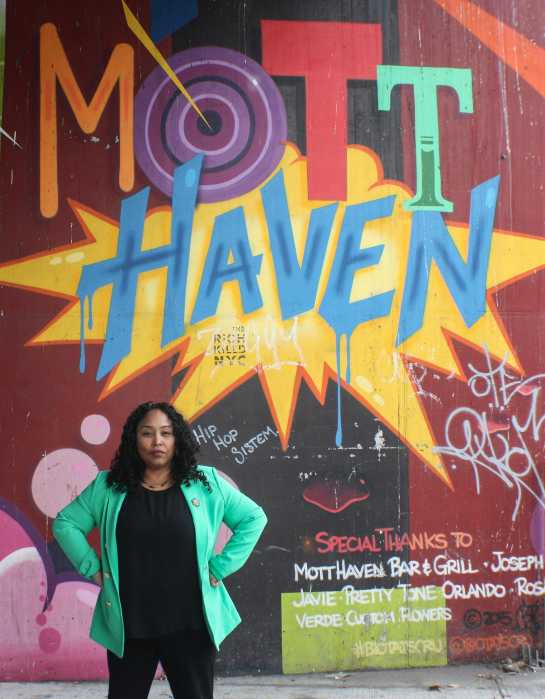By JERRY TALLMER
Through the fence, between the curling flower spaces, I could see them hitting. They were coming toward where the flag was and I went along the fence. Luster was hunting in the grass by the flower tree. They took the flag out, and they were hitting. Then they put the flag back and they went to the table and he hit and the other hit …They went away across the pasture. I held to the fence and watched them going away.
“Listen at you, now.” Luster said. “Ain’t you something, thirty- three years old, going on that way … Hush up that moaning. Ain’t you going to help me find that quarter so I can go to the show tonight” … I went back along the fence to where the flag was. It flapped on the bright grass and he trees.
“Come on,” Luster said. “We done looked there. They ain’t no more coming right now. Les go down to the branch and find that quarter before them niggers finds it.”
With those opening words, from next to a golf course in the Mississippi of 1928, we enter the mind of Benjy, also known as Maury, a grown man who cannot speak – was born mute and stayed that way – yet who nevertheless speaks to us, unforgettably, through the pages of “The Sound and the Fury,” by William Faulkner (1897-1962), one of the two greatest American novels, the first being Mark Twain’s “Huckleberry Finn.”
With those opening words, from next to a golf course in the Mississippi of 1928, we enter the mind of Benjy, also known as Maury, a grown man who cannot speak – was born mute and stayed that way – yet who nevertheless speaks to us, unforgettably, through the pages of “The Sound and the Fury,” by William Faulkner (1897-1962), one of the two greatest American novels, the first being Mark Twain’s “Huckleberry Finn.”
A central concern of both these masterpieces is human relationships, more exactly black/white relationships, in the pre- and post-Civil War American South. Luster, who is Benjy’s caretaker of a sort, is a teenage Negro and the son or grandson of Dilsey, the formidable aging black woman who more or less presides over the disintegrating white family that has produced Benjy-Maury and his rebellious sister, Candace, or Caddy – a girl who to Benjy smells like trees, smells like the rain, and with whom he is inarticularly in love.
So who would dare to try to convey to the stage all the force and all the nuances and shadings of this intricate, mazelike work, in which people change names and genders and ages within a single paragraph or sentence or clause? Director John Collins and a baker’s-dozen members of his investigatory Elevator Repair Service theater company, that’s who. The New York premiere of their anatomy lesson is now available for your inspection through May 18 at the New York Theatre Workshop, 79 East 4th Street.
New Yorker J. Tallmer was 19 or 20 years old, up in the snows of New Hampshire, when he stumbled upon the most exciting and most difficult book (until, later, Joyce) he’d ever read in his life: this one.
John Collins, from a Southern family, was (30 years later) around the same age when he too, at Yale, first opened the pages of a “Sound and Fury” that left him “excited and intimidated” in equal proportions. It would be almost 20 years later still that the actors of his Elevator Repair Service chose by consensus to tackle “The Sound and the Fury” on the heels of the “Gatz” they had, with great success, crafted from Scott Fitzgerald’s “The Great Gatsby.” (James Gatz – modeled on real-life Chicago gambler Arnold Rothstein – had been the birth name of the mystery man who showed up on Long Isand as Jay Gatsby.) The idea in these and other Elevator Repair Service ventures (Kerouac, Henry James) says founder/artistic director Collins is “to bring works of American literature to the stage without adapting or rewriting it,” as for instance:
The names Maury, Quentin, Candace (Caddy), Father (Jason), Mother (Caroline), Benjy reverberate and alter owners, so to speak – Benjy began life as Maury in honor of his uncle, Quentin is the name both of Benjy’s beloved sister and of that sister’s illegitimate daughter — throughout “The Sound and the Fury (April Seventh 1928).” That’s the full title both of the theater piece on East 4th Street and of the long opening section (75 pages) of the novel from which it is on loan.
“The idea,” says director Collins, “is to put these things on stage without adaptation or rewriting.”
As noted, the characters in this story of the postwar decline and fall of the Compson family of Yoknapatawpha County, Mississippi, are often named after one another, which means that the name of any given character frequently changes between one life, one breath and the next; thus the kid named for his Uncle Maury is renamed Benjamin when, at age 3, his total muteness becomes inescapably established; and this whole first fiery section of the novel flows from the mind of the speechless Benjy at indeterminate intervals between the ages of 3 and 33. A tale told by an idiot, full of sound and fury, signifying nothing – and everything.
That speaker is played – spoken – at NYTW by an actress named Susie Sokol. Her fellow actors are Mike Iveson, Vin Knight, Aaron Landsman, April Matthis, Annie McNamara, Randolph Curtis Rand, Greig Sargeant, Kate Scelsa, Kaneza Schaal, Tory Vazquez, and Ben Williams. The director is Mr. Collins.
“We deliberately chose the most structurally complex part of the novel, not to simplify that complexity but to celebrate it.”
Now what is needed: An audience up to that complexity and willing to join in its celebration.
THE SOUND AND THE FURY (APRIL SEVENTH 1928), Based on Part 1 of the 1929 novel by William Faulkner. Created by Elevator Repair Service. Directed by John Collins. Presented through May 18 by and at the New York Theatre Workshop. 79 East 4th Street, (212) 239-6200.































